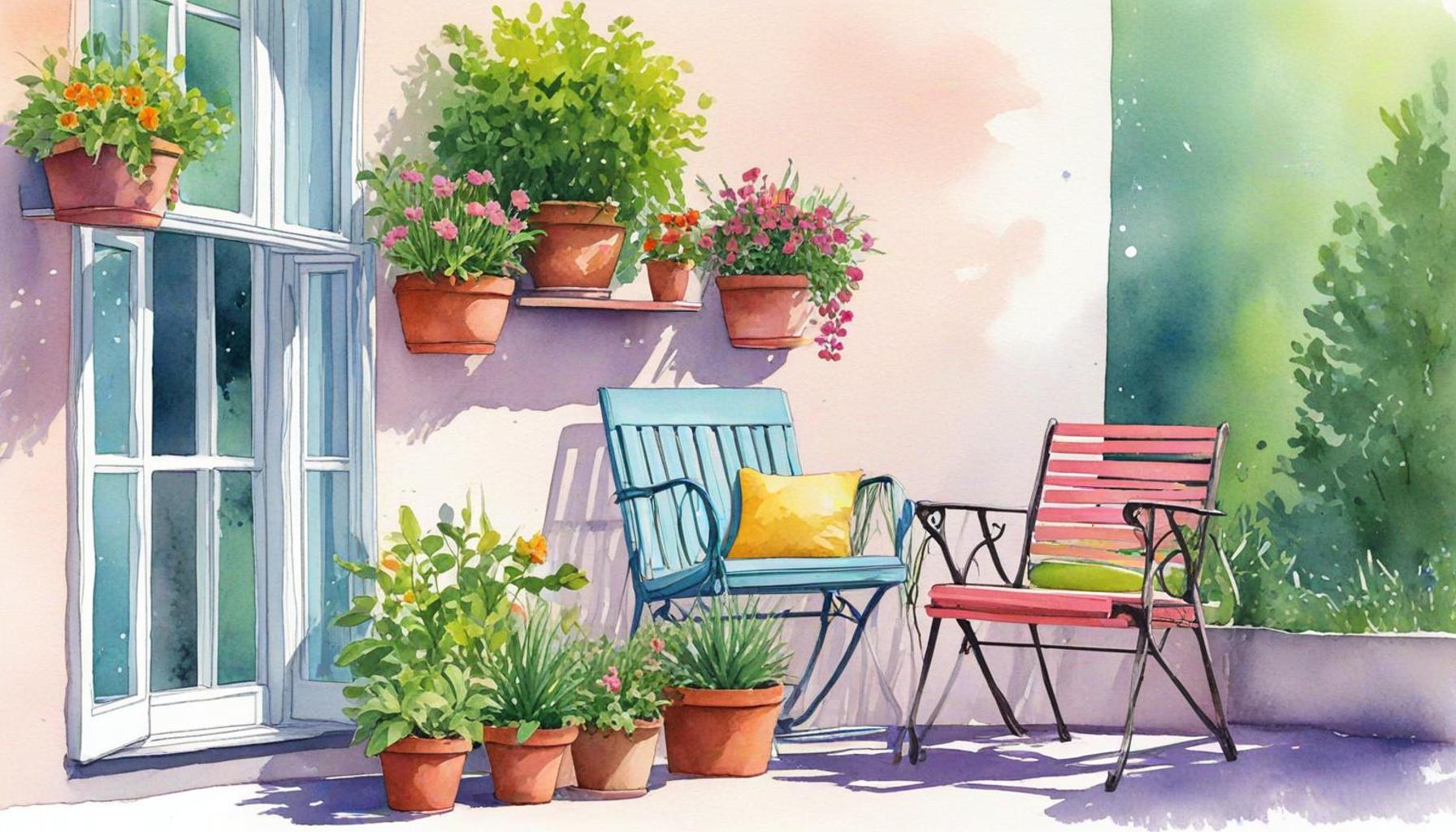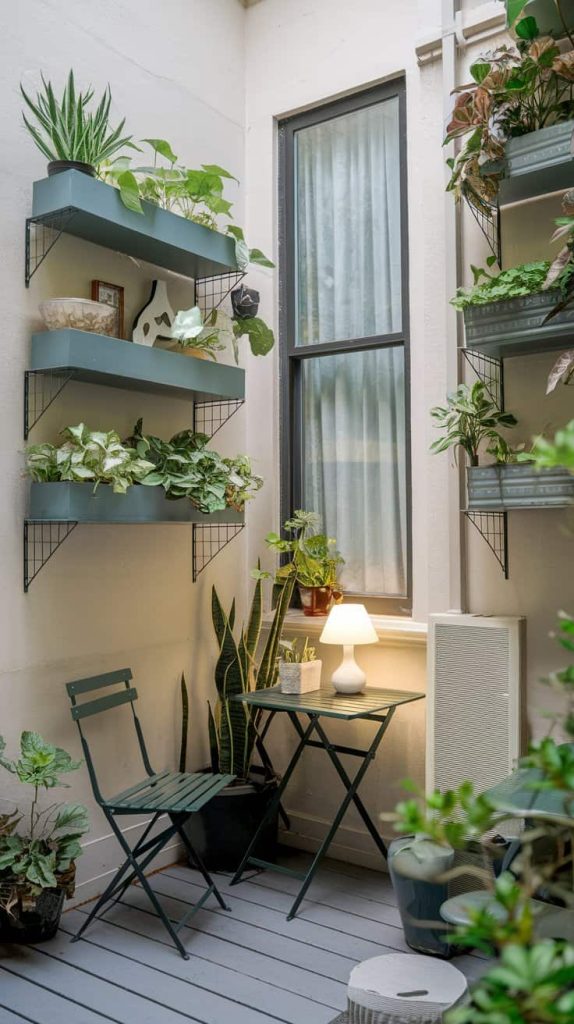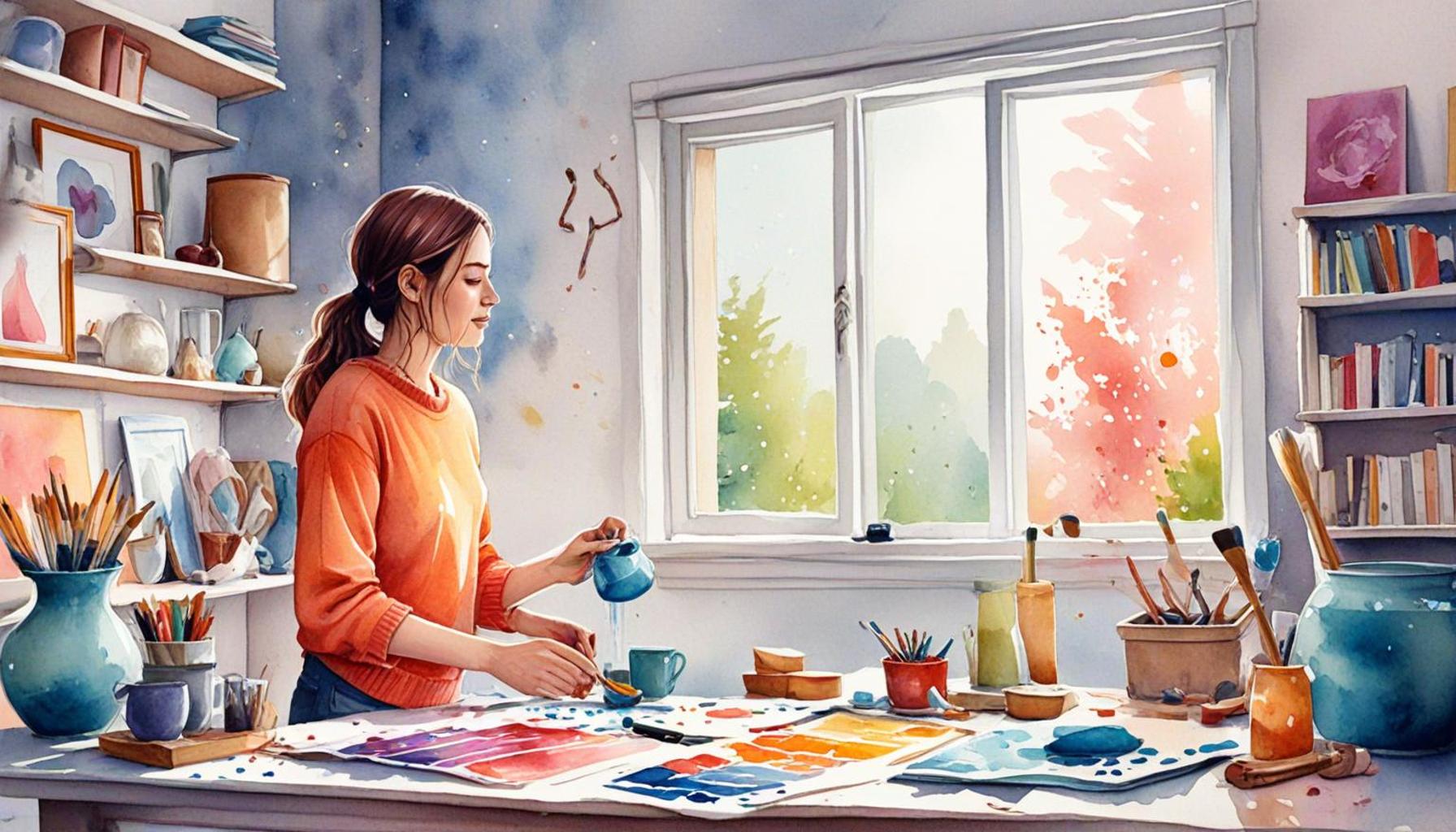Transforming Outdoor Spaces: Tips for Organizing Gardens and Balconies with a Minimalist Touch

Embrace Minimalism in Your Outdoor Spaces
In today’s fast-paced world, the allure of calm and simplicity is more appealing than ever. Transforming your outdoor spaces into a minimalist sanctuary can provide a refreshing escape. Whether you have a sprawling garden or a petite balcony, a few key strategies can elevate your space significantly.
Why Choose Minimalism?
Minimalism promotes clarity and tranquility, which can be essential in navigating our hectic lives. Here are a few benefits to consider:
- Reduced clutter: A decluttered space allows for better mental clarity. When surrounded by fewer distractions, it becomes easier to relax and reflect, creating a perfect environment for mindfulness.
- Enhanced aesthetics: Clean lines and fewer items create a harmonious look. This simplicity can elevate the visual appeal of your outdoor space, drawing attention to the beauty of nature itself.
- Increased functionality: Simplified areas are easier to use and maintain. By removing unnecessary items, you can focus on the essentials, making your outdoor space more enjoyable and practical.
Key Elements of a Minimalist Garden or Balcony
To begin your transformation into a minimalist outdoor retreat, focus on these essential elements:
- Selective Planting: Opt for a limited variety of plants that complement each other. For instance, consider incorporating native species that thrive in your region, such as the lavender or coneflower, which not only require less maintenance but also attract beneficial pollinators. A well-curated selection gives your space an organized yet vibrant appearance.
- Functional Furniture: Invest in multi-purpose, sleek furniture that serves several functions. Consider sleek folding chairs or a bench with storage space, which can provide comfort without overwhelming the area. This dual functionality is perfect for smaller spaces, making it easier to enjoy outdoor gatherings or quiet evenings under the stars.
- Neutral Palette: Utilize soft, natural colors to create a serene environment. Earthy tones can evoke a sense of calm, and accessories in whites, grey, and beige can provide a cohesive look. Adding varying textures can keep the space visually interesting while maintaining that essential minimalist ethos.
When executed thoughtfully, these minimalist principles can revolutionize your outdoor spaces, allowing you to unwind in a tranquil environment where the beauty of nature takes center stage. As you explore this transformative journey, think about how you interact with your outdoor area, reimagining it as a space of peace and purpose. The benefits of embracing a minimalist approach are profound, inviting you to discover the simple pleasure of a carefully curated sanctuary amidst the chaos of everyday life.
DISCOVER MORE: Click here to uncover the importance of conscious consumerism

Practical Steps to Implement Minimalism
As you embark on the journey of transforming your outdoor space into a minimalist haven, it’s essential to adopt a structured approach that maximizes both aesthetics and functionality. Here are some practical tips that will guide you through this transformative process:
Assess and Plan Your Space
Before diving headfirst into your minimalist makeover, take some time to assess your current garden or balcony layout. Asking yourself some critical questions can help clarify your vision:
- What is the primary purpose of this space? Determine if you want it to be a relaxing retreat, a place for entertaining guests, or perhaps a small urban garden for growing herbs and vegetables.
- Which features do I truly enjoy? Identify elements you love and cannot live without. This could be a particular plant, a favorite chair, or an outdoor rug that brings comfort.
- What is essential and what can be eliminated? Evaluate items that clutter your space, including pots, tools, and decorative objects. Minimalism is about embracing the notion that less can often be more.
By thoughtfully considering these aspects, you can create a detailed plan to curate your outdoor area effectively.
Incorporate Smart Storage Solutions
One of the cornerstones of a minimalist outdoor space is smart storage that aids in organizing while keeping things stylish. Investigate options that allow for hidden storage or minimalist designs that integrate smoothly into your décor. For example:
- Under-bench storage: Many benches come with built-in compartments, allowing you to store gardening tools or cushions without sacrificing style.
- Vertical gardening: Utilize wall planters or vertical gardens to conserve space, showcase your plants beautifully, and keep the ground clutter-free.
- Stylish outdoor bins: Invest in chic storage bins made of weather-resistant materials to store garden toys or other outdoor essentials, ensuring your space remains tidy.
These functional tools can help you maintain that clean, uncluttered look while ensuring everything you need is still within reach.
Focus on Essentials
When it comes to minimalist design, embrace the concept of fewer but better items. Select a limited number of high-quality pieces that fulfill both aesthetic and practical purposes. This could involve:
- Choosing a statement piece: A striking fire pit or a designer hammock can serve as the focal point of your garden or balcony, creating atmosphere without overshadowing the space.
- Limiting plant varieties: Stick to a handful of well-chosen plants that thrive together. This not only simplifies maintenance but visually ties the space together, reinforcing the serene minimalist ethos.
- Using multipurpose items: Look for furnishings that can serve multiple roles, such as a coffee table that can double as seating or a small console that holds pots while acting as a display surface.
By concentrating on essentials, you create a cohesive, beautiful outdoor area that inspires relaxation and joy. Embracing these steps will not only elevate your outdoor environment but also lead you to discover the beauty of simplicity among nature’s bounty.
| Minimalist Design Principles | Practical Implications |
|---|---|
| Simplification | Embraces fewer, but impactful, elements to create a serene atmosphere. |
| Functional Furniture | Encourages use of multi-functional pieces that enhance usability without clutter. |
| Natural Materials | Promotes the use of sustainable and tactile materials, fostering a connection with nature. |
| Color Palette | Utilizes muted tones to enhance tranquility and visual harmony. |
Incorporating these minimalist design principles not only transforms the visual appeal of gardens and balconies but also fosters a sense of peace and order. By focusing on simplification, you remove unnecessary clutter and create a space that invites relaxation. This approach is vital for urban dwellers who often face space limitations.Moreover, functional furniture becomes a cornerstone in minimalist gardens and balconies. Opting for versatile seating or storage solutions can significantly enhance the practicality of these outdoor spaces, allowing for easy organization and multifunctionality. The integration of natural materials like bamboo, stone, or untreated wood not only adds aesthetic value but also aligns with sustainable practices, creating harmony between modern living and nature. Additionally, respecting a refined color palette featuring soft, earthy tones helps to maintain a calming environment, which is an essential consideration in designing outdoor retreats.
DISCOVER MORE: Click here for tips on optimizing your home
Creating Harmony with Color and Textures
A minimalist outdoor space embraces simplicity, but that doesn’t mean it lacks personality. Rather, it’s about choosing the right color palettes and textures that invoke tranquility and a sense of cohesion. Here are some ways to achieve harmony in your garden or balcony:
Select a Crisp Color Scheme
Begin by opting for a limited color palette that reflects the calmness of nature. Shades of green, white, and earthy tones can create a seamless and inviting atmosphere. Consider:
- Monochromatic schemes: A single color in various shades can create visual interest without overwhelming the senses. For instance, different varieties of green plants paired with a neutral backdrop can evoke serenity.
- Accent colors: Adding a pop of color can be effective, but don’t go overboard. A red chair or yellow flower can serve as a striking focal point while maintaining the overall minimalist approach.
By carefully selecting and limiting your colors, you’ll cultivate a refined space that promotes relaxation and rejuvenation.
Embrace Natural Materials
Integrating natural materials into your minimalist outdoor design reinforces the connection to the environment. Consider the following:
- Wood elements: Items such as teak chairs or bamboo planters bring warmth and organic textures without appearing cluttered. Choose untreated or sustainably sourced woods to further your commitment to simplicity and the environment.
- Stone and gravel: Using stone for pathways or gravel in planters can create a clean look that requires minimal maintenance. These materials offer durability and enhance the natural feel of the surroundings.
- Soft textiles: Incorporating outdoor cushions or rugs in simple patterns can add comfort without demanding attention. Opt for weather-resistant fabrics in muted tones to preserve the minimalist aesthetic.
Natural materials not only foster a sense of harmony but also contribute to the overall sustainability of your outdoor space.
Mind the Layout
The arrangement of furniture and plants in your garden or balcony is critical to achieving a minimalist design. A well-thought-out layout enhances both functionality and beauty. Here are some pointers:
- Use the rule of threes: In garden design, grouping plants in odd numbers contributes to visual intrigue. This simple arrangement leads the eye naturally while preventing the area from feeling overcrowded.
- Define zones: If your outdoor space serves multiple purposes—like dining and relaxation—consider using subtle separators such as low planters or distinct rugs. This approach helps to maintain clear areas while still providing an open and airy feel.
- Leave space for movement: Design pathways or seating arrangements that allow for easy navigation. Clear pathways prevent clutter, ensuring that the beauty of each element is recognized.
By thoughtfully considering your layout, you can create a space that feels expansive and freeing, embodying the essence of minimalism.
Incorporate Lighting Tactically
No outdoor space is complete without proper lighting, especially if you wish to enjoy it in the evenings. The right lighting can significantly enhance your minimalist garden or balcony:
- Use subtle fixtures: Avoid overwhelming the space with harsh lights; instead, select minimalist fixtures like sleek lanterns or fairy lights that complement your aesthetic.
- Layer lighting: Combine ambient lighting for general illumination, accent lighting to highlight specific plants or features, and task lighting for functional areas such as dining tables.
- Consider solar options: Solar-powered lights are an eco-friendly choice that eliminates the need for wiring while providing warm illumination.
Effective lighting can transform your outdoor space into a magical retreat, providing both safety and charm while embracing a minimalist philosophy.
DISCOVER MORE: Click here to dive deeper
Embracing the Minimalist Outdoor Aesthetic
In conclusion, transforming your outdoor spaces into serene havens with a minimalist touch is not only a creative endeavor but also a practical one. By strategically selecting color palettes, integrating natural materials, and mindfully arranging furniture and plants, you can create an inviting atmosphere that encourages relaxation and tranquility. Minimalism is about more than just aesthetics; it’s about promoting sustainability and a harmonious connection to nature.
Choosing the right lighting can further enhance this transformation, allowing your garden or balcony to shine during dusk and evening gatherings. Subtle fixtures and layered illumination highlight the beauty of your carefully chosen elements, ensuring that each piece serves a purpose without overwhelming your space.
As you take on the challenge of organizing your garden or balcony, remember that each choice contributes to the overall experience. Consider your lifestyle needs and the ambiance you wish to cultivate, whether it’s a cozy reading nook or an elegant dining area. With these tips, your minimalistic outdoor space can reflect not only your personal style but also your commitment to creating a peaceful retreat amidst the chaos of daily life.
Let the journey of transforming your outdoor space inspire you to explore further innovations in design and functionality. By adopting a minimalist mindset, you can redefine the way you enjoy and interact with your outdoor environment, fostering a sanctuary that rejuvenates your spirit.


